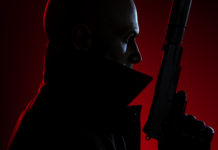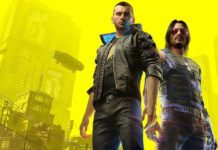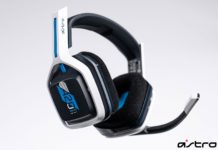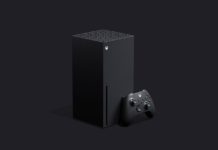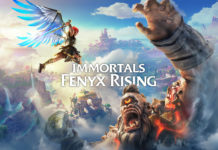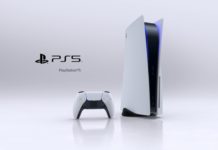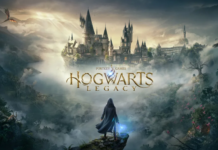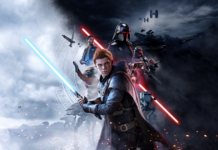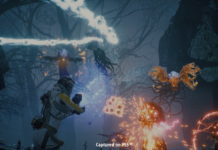mechanics differ from other games in the genre, the controls are mostly the
same. The camera is very flexible, more so than in Insomniac’s previous game,
Spyro the Dragon. However, it moves a bit slow, and thus comes across as
being sluggish, not silky-smooth. It is precise though, just not as quick as
it should be. Ratchet himself moves at a steady pace: slower than Jak &
Daxter, but faster than Banjo-Kazooie. Most gamers, especially kids, won’t
even be able to pick out the differences in speed.
The part of the controls
that’s a little different is actually the best. Selecting and then using any
one of Ratchet’s 30+ weapons and gadgets is about as easy as easy can get.
The triangle button serves as a "quick select" weapons/gadget menu. From here
you can allocate any single weapon or gadget to the circle button. The circle
button then becomes your weapon’s trigger. To switch back to Ratchet’s
standard weapon, all you have to do is press the square button.
That’s good and all, but
the thing that makes the weapons special is how easy they are to use while
exploring each gigantic world. Enemies are in high abundance, so it’s vital
that you are able to attack at a moment’s notice. In some cases it’s vital to
be ready to attack before the danger even presents itself. Both the Blaster
and the Pyrocitor (flame thrower) work flawlessly while in motion. The
weapons fire in the same direction that Ratchet is traveling in. Think of it
as a 3D version of Contra, only smoother, much simpler and ultimately more
fun. There’s also a first-person mode for looking around, but it can also be
used to aim at moving targets or at enemies that are far away. The
first-person view is a little more effective than the one in Jak & Daxter,
though still not quite perfect.
Each level was designed
from the ground up with a distinct out-of-this-world atmosphere in mind (which
makes sense, considering the game takes place on multiple planets). Some
words are more organic, like a less-civilized version of Naboo (from Star
Wars), while others are very industrialized, with more buildings and less
natural wonder. All of them have a unique layout that feels different.
Although it could be said that Ratchet & Clank borrows heavily from other
platformers, one thing that the developers created entirely themselves is the
levels. To me, level design is one of the most important things in a video
game, especially a platformer or an action/adventure (Ratchet & Clank is a
little of both, mind you).
When you enter a new
world, the first thing you’ll notice is how big it feels. In actuality, it
may not be nearly as big as you’d hoped it’d be (that is, if you’re like me
and want great games to last forever), but the feeling is there.
Some of the levels are
comprised of giant above-ground platforms, while others are a little more
solid, but still have areas where you can fall to your death. The "giant
platforms" I’m referring to can be as large as 1/10 the size of the average
level in Banjo-Kazooie (larger in some cases). There are several of these
platforms, as you’ll find in the game’s second world. It’s essentially one
great big city, but the platforms are hundreds of feet above ground, giving
the world a nice cloud city feeling (also reminiscent of Star Wars).
The levels go beyond the
fairly simple mission goals. Once completed, you may exit the level and move
onto the next mission. (You can exit the world sooner, but it would be at
your disadvantage to do so.) Inside one watery cave you’ll find a few
different passages that lead to helpful (though not special) items and more
enemies to fight. Your in-game map will then show that you have explored the
world even further, helping to give you an idea as to how much you’ve
completed and how much is left to be done.
Ratchet & Clank’s
cartoony (fully polygonal — not cel-shaded) worlds and characters look
exactly like a 3D version of Klonoa. The designs are different, but the
graphical style is pure Klonoa. The result is a beautiful game that looks
great 90% of the time. That feeling I mentioned above, the one you get when
you first enter a world, is all possible thanks to the game’s terrific,
highly-convincing graphic engine (and some really talented artists). They
(the artists) essentially expanded the worlds that are there and made them
appear to be much bigger than they really are.
When getting up close and
personal will Ratchet, you’ll be amazed at how smooth his animation is. His
facial expressions are top-notch. Like a character from a computer-generated
movie, Ratchet’s eyebrows raise when he is excited, while his mouth moves
perfectly in-sync with what he is saying. Even his eyes move realistically!
This is true for the other, non-playable characters as well. However, none of
the NPCs are as realistic-looking as Ratchet. Ratchet’s skin (if you can call
it that — it looks kind of furry) has nice, vibrant, detailed textures that
make him look even better. The other characters are a little less colorful.
They still look pretty good, just not as impressive as Ratchet.
Ratchet & Clank is
another must-play platformer from Sony. The emphasis on weapon combat over
punching/butt stomping is great. It’s an excellent change, one that I hope
isn’t copied by competing companies. I want this series to be allowed to grow
freely without Insomniac having to feel like they’ve got to one-up the
competition because all of their ideas got ripped off. As it is, they have
matched the competition well by providing a unique experience that can’t be
found anywhere else. If I was a salesperson at an electronics store, and
someone came up to me and said, "Should I buy Sly Cooper or Ratchet & Clank?"
I’d say, "Get both." Believe it or not, Sly Cooper and Ratchet & Clank’s
gameplay is nearly equal. One is not entirely better than the other.
Different, yes, but not better. Christmas is coming, and the goose is getting
fat, so unload your wallet and bring home Ratchet & Clank today, or ask Santa
to put it in your stocking. Kids and adults will love it. Cynical teens will
love it, too.
Gameplay: 9.1
Ratchet & Clank
is gorgeous, enormous and fun. When you’re not blasting enemies, you’re
exploring one of several worlds, and when you’re not doing that, you’re buying
a new weapon, collecting items or searching for one of the game’s hidden
secrets. Translation: there’s always something to do in Ratchet & Clank.
Graphics: 8.7
Bright, colorful
and very Klonoa-like, Ratchet & Clank’s visuals are about as good-looking as
they can get on the PlayStation 2 without moving into more realistic
territory.
Sound: 7
Appropriate,
cartoon-style music and sound effects complete the Ratchet & Clank experience.
Difficulty: Medium
Although a bit
easier than Sly Cooper, Ratchet & Clank has enough hidden secrets, and an
abundance of enemies to ensure that you don’t beat it too quickly.
Concept: 8
Ratchet & Clank
is the first platformer to feature projectile weapons as its primary way of
defeating enemies. That alone deserves praise. The unique levels make this
game even more diverse.
Overall: 9
Ratchet & Clank
takes the standard platformer/action-adventure formula, changes the rules a
little, ads weapons, expansive levels and a ton of eye-candy for gamers to
feast on. And in plenty of time for Thanksgiving, no less!

